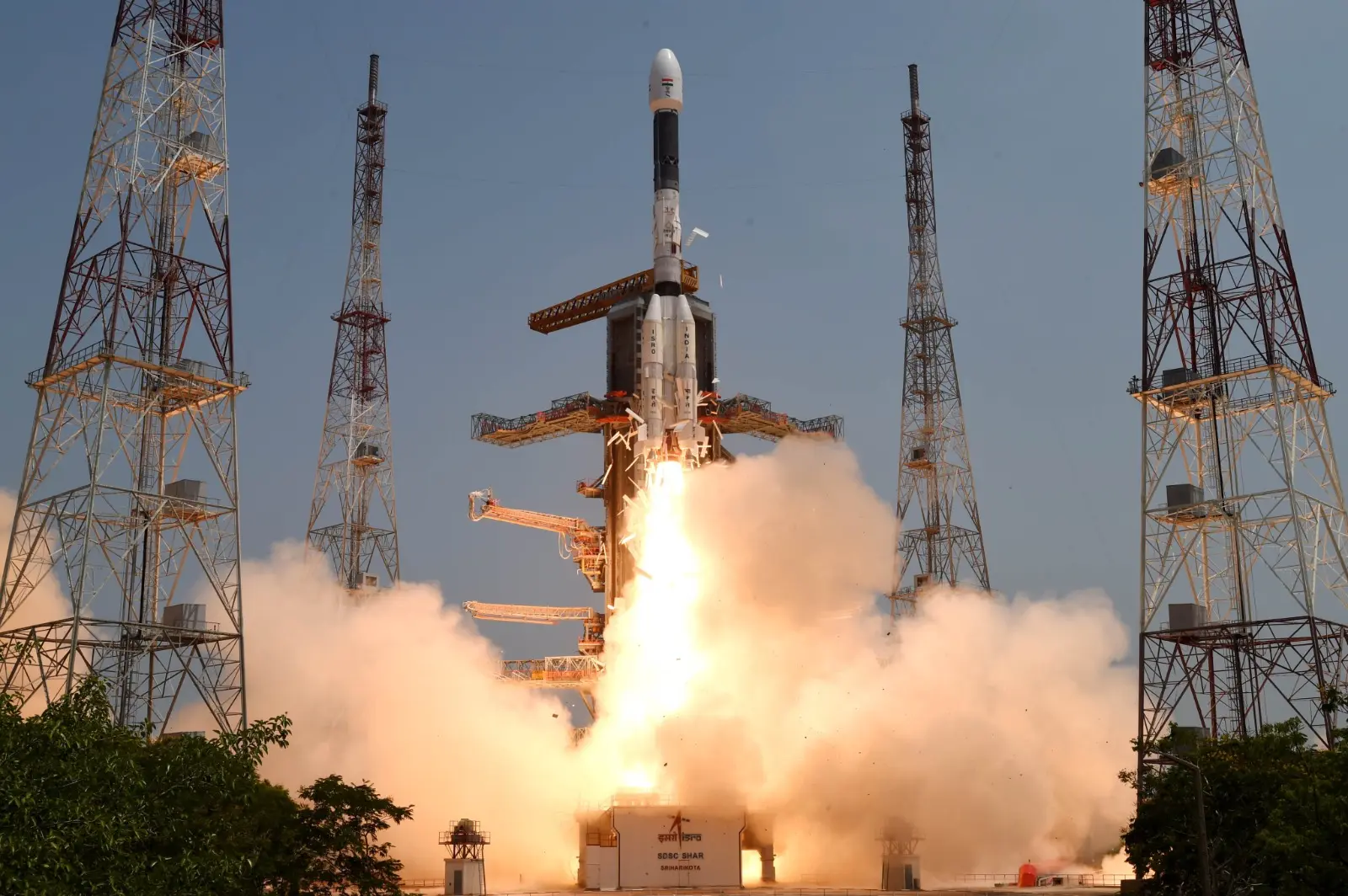The Indian Space Research Organisation (ISRO) achieved yet another remarkable feat on May 29 as it successfully launched the NVS-01 navigation satellite into Geosynchronous Transfer Orbit (GTO). The Geosynchronous Satellite Launch Vehicle (GSLV) lifted off from the second launch pad at the Satish Dhawan Space Centre SHAR, Sriharikota, with precision and power, carrying the 2232 kg satellite.
The NVS-01 satellite, the first in a series of five satellites, was injected precisely into GTO after a flight of approximately 19 minutes. ISRO stated that subsequent orbit-raising manoeuvres will guide the NVS-01 into its intended Geosynchronous orbit. This achievement is of great significance as it demonstrates India’s growing capabilities in space technology and navigation.
Speaking from the control room, ISRO Chairman S. Somanath congratulated the entire team behind the mission for their exceptional work. He emphasized the importance of this success following the setback encountered during the F10 mission, where an issue with the cryogenic stage arose. Chairman Somanath expressed his satisfaction with the corrections and modifications made to the cryogenic stage, along with the valuable lessons learned from previous missions, to enhance the reliability of future launches.
ISRO provided additional details regarding the GSLV-F12 mission, stating that it marked the 15th flight of India’s GSLV and the 9th flight with an indigenous cryogenic stage. Notably, it was the 6th operational flight of the GSLV with an indigenous cryogenic stage. The NVS-01 satellite carried navigation payloads in the L1, L5, and S bands. Furthermore, the mission showcased the maiden flight of an indigenous atomic clock onboard the NVS-01 satellite, a significant technological advancement for India’s space program.
During a press conference held later, Chairman Somanath revealed ISRO’s future plans. The space agency intends to launch the weather satellite INSAT-3DS using the GSLV, contributing to further advancements in weather forecasting and monitoring. Moreover, ISRO aims to complete its navigation satellite constellation by launching four more NVS series satellites. Additionally, ISRO is working on the development of a new rocket capable of carrying heavier payloads, as well as upgrading the LVM3 rocket to increase its capacity from the current 4-ton limit to 5.5 tons.
Looking ahead, Chairman Somanath highlighted the upcoming challenges and endeavors awaiting ISRO. In July, the space agency plans to test the crew escape systems for the Gaganyaan project, India’s ambitious mission to send humans to space. The team is actively preparing for the test vehicle mission, focusing on integrating the crew module and crew escape system with the rocket. The Chairman further explained that the upcoming test, to be conducted at an altitude of 14 km, will assess the system’s ability to ensure the crew’s safety in the event of an unforeseen mishap. Additionally, other critical systems for the Gaganyaan mission are currently undergoing rigorous testing at various ISRO centers. The unmanned Gaganyaan mission is scheduled for launch early next year.
The successful placement of the NVS-01 navigation satellite into orbit reflects India’s growing prowess in space exploration and satellite technology. ISRO’s achievements contribute to the nation’s scientific and technological progress while paving the way for future advancements in space research, weather forecasting, navigation, and the eventual realization of human spaceflight through the Gaganyaan mission. As ISRO continues to break new ground and overcome challenges, it reaffirms India’s position as a prominent player in the global space industry.





